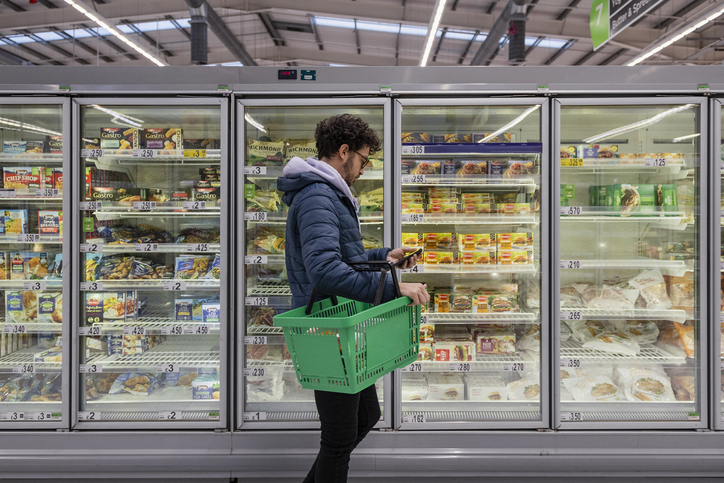Financial concerns are continuing to impact consumer spending on both in-home dining and restaurant meals, according to Datassential research that the company presented in a webinar last week.
Inflation is the top concern for consumers heading into 2024, cited by 75 percent of consumers, Datassential’s research found.
“It’s the most important metric to how they gauge their quality of life,” said Huy Do, publications manager at Datassential.
Other top concerns included political instability and polarization, cited by 62 percent of survey respondents, and international conflicts and crises, cited by 60 percent. More than half of respondents—56 percent—are concerned about a potential economic recession.
The data reflected consumers’ increasing concern about their financial position, with 19 percent saying they are falling behind financially as of November of this year, compared with 6 percent who said they were getting ahead. Higher-income consumers are more likely to say they are getting ahead, while lower-income consumers are more likely to say the opposite, said Do.
“Consumers who were already challenged are having a tougher time,” said Jack Li, founder and builder, Datassential.
The economic uncertainty is having an impact on consumer spending, according to the Datassential research. Nearly half of consumers — 46 percent — said they were cutting back on their spending on restaurant meals, and 32 percent said they were trying to save by reducing spending on groceries. Both numbers are down significantly from 18 months ago, however.
The most common way consumers said they are saving money at grocery stores was by switching to more private label brands, cited by 45 percent of consumers. Forty percent said they were using coupons more often, and 38 percent said they were visiting lower-cost grocery stores.
Other ways grocery shoppers are cutting back include:
• Shopping multiple stores to find lowest prices (32 percent);
• Making at home what I could otherwise buy prepared (31 percent);
• Buying ingredients in bulk to prep and freeze for later (27 percent);
• Making at home what I could otherwise buy packaged (25 percent);
• Buying frozen produce instead of fresh (23 percent);
• Substituting lower-price proteins (17 percent);
• Shopping for only in-season produce (14 percent);
• Planning for a day in the week to be “meatless” (10 percent); and
• Switching from organic brands to regular brands (10 percent).
At restaurants, the most popular ways consumers are seeking to save money is by ordering fewer add-ons, such as appetizers, sides or desserts, which was cited by 37 percent of consumers, followed by looking for restaurant coupons in the mail, cited by 36 percent.
Other food-and-beverage-related areas where consumers said they were cutting back on spending included alcoholic beverages (23 percent) and ecommerce (20 percent). In addition, 35 percent of respondents said they were cutting back on travel.
Consumers' concern about their financial well-being is also reflected in their plans for new year resolutions. The top response among consumers when asked about these goals for 2024 was to “save more money,” cited by 50 percent of consumers. It was followed by a list of health-and-wellness goals, including “exercise more” (45 percent), “be happier “(44 percent), “improve my physical health” (43 percent), and “eat healthier” (42 percent).
Operators Cite Traffic Gains, Labor Strains
In its survey of restaurant operators, Datassential found that traffic and revenues have improved overall in 2023, while concerns about labor and other costs have increased. Thirty-five percent of operators said foot traffic has increased, for example, compared with 19 percent who said it has decreased, with similar rates for both on- and off-premises sales revenues.
“Most operators have been relatively optimistic throughout 2023,” said Do.
Also of note, 24 percent of restaurant operators reported that the rate of new-menu introductions increased in 2023, compared with only 7 percent who said the rate had decreased.
When it comes to staffing, turnover, and employee retention, however, only 19 percent of operators reported an improvement, compared with 42 percent who said those labor conditions had worsened in 2023. Operators also reported worsening employee performance and morale, and said back-of-house culinary skills have deteriorated.
Datassential also found that the tumultuous period of restaurant closings that persisted through the pandemic appears to have settled, as new-restaurant openings have consistently outpaced restaurant closings for about a year now.
Related: James Beard Foundation Polls Independent Restaurants; Whole Foods Readies 12 Days of Cheese.

